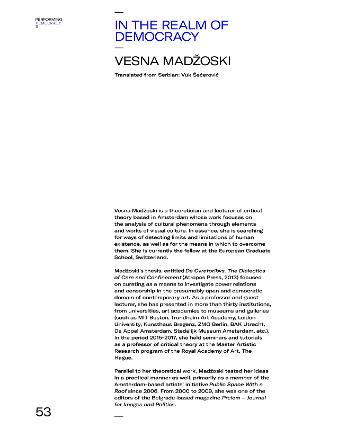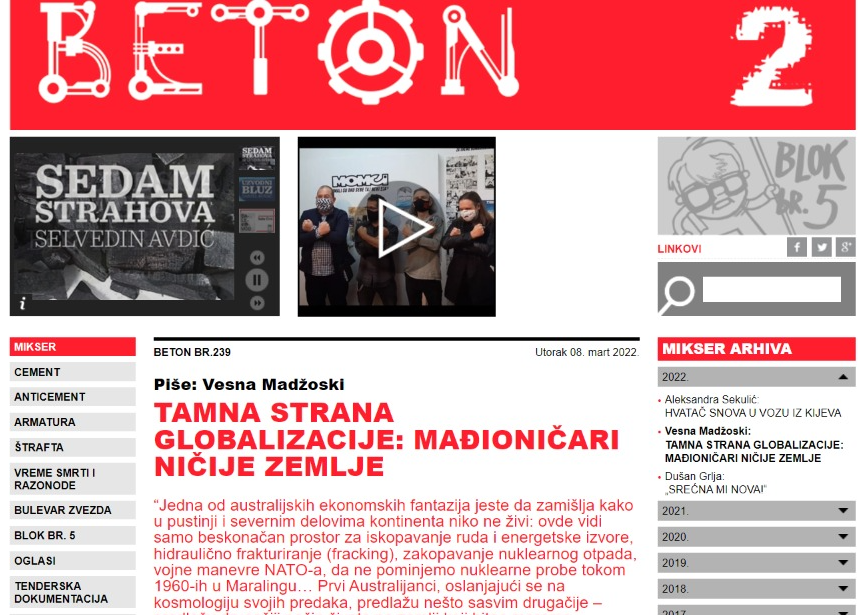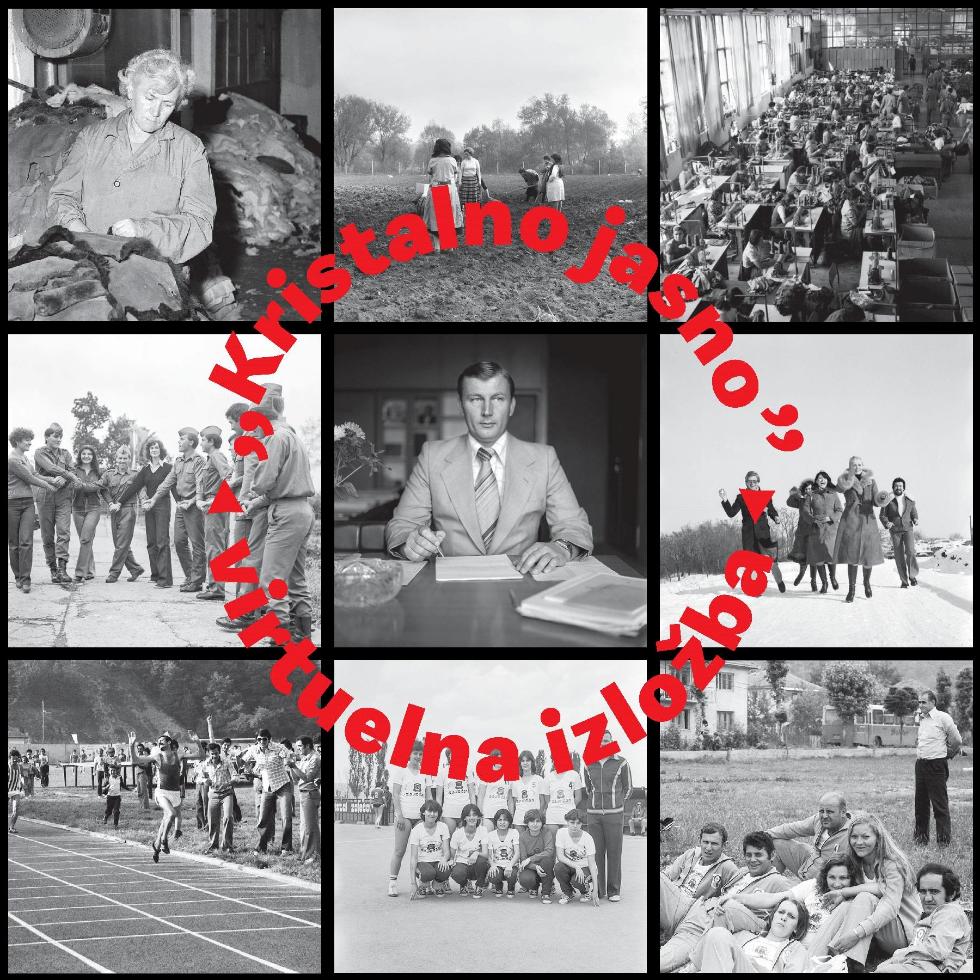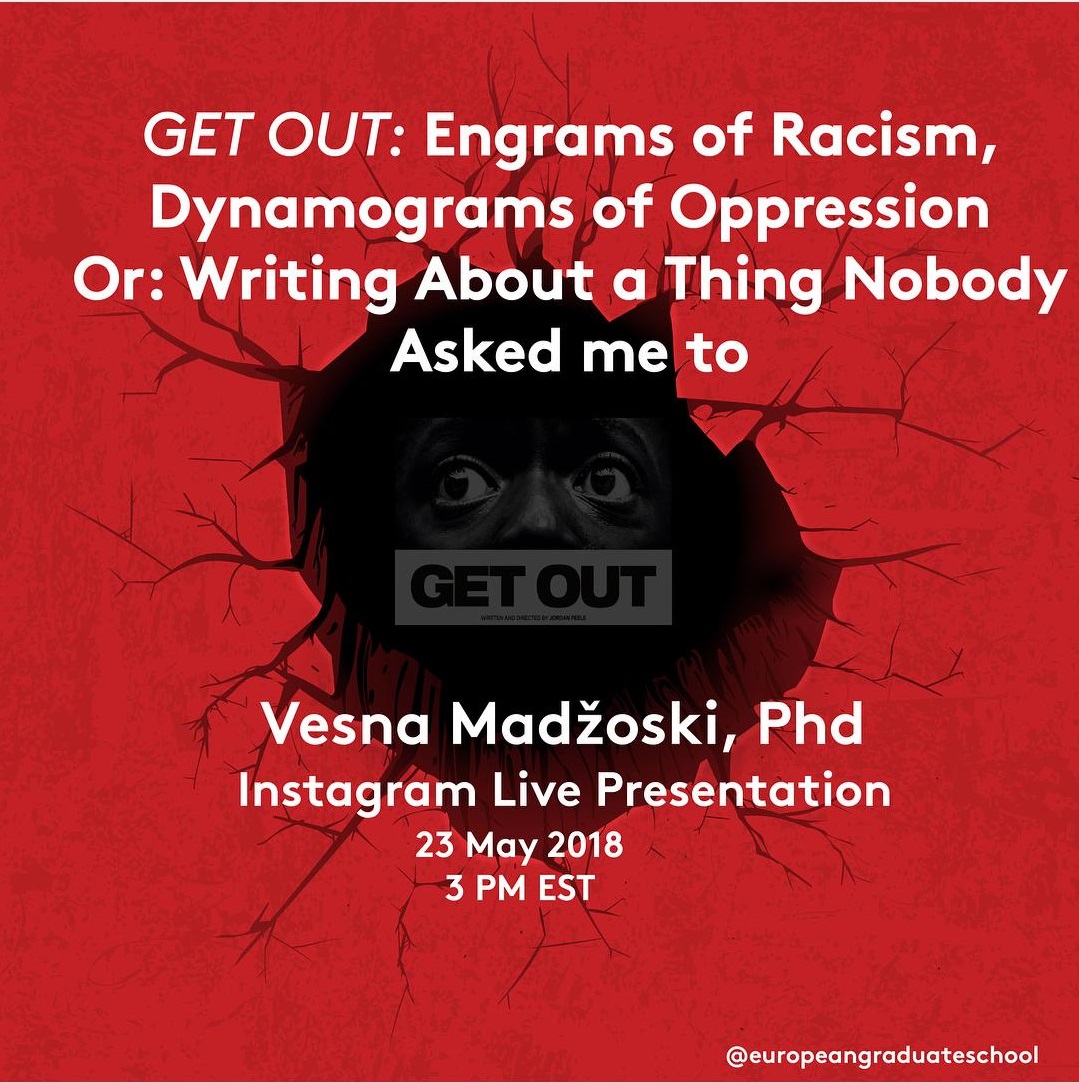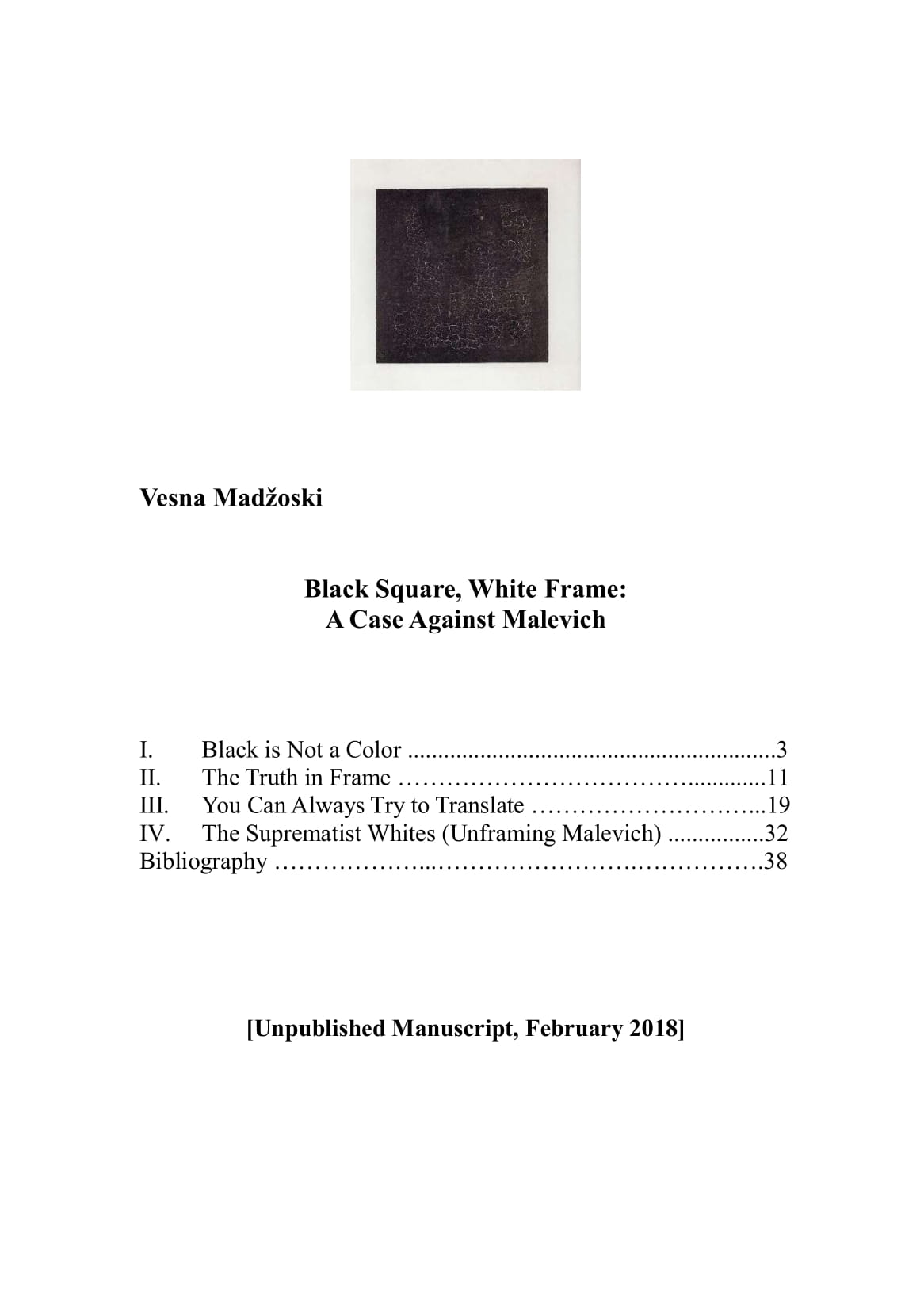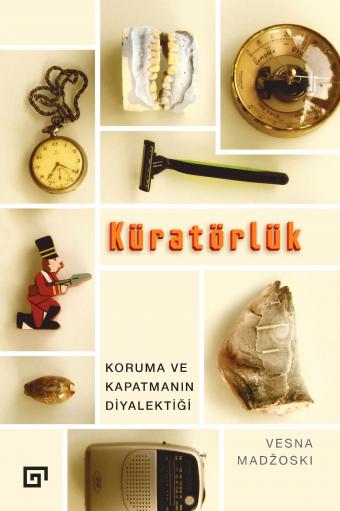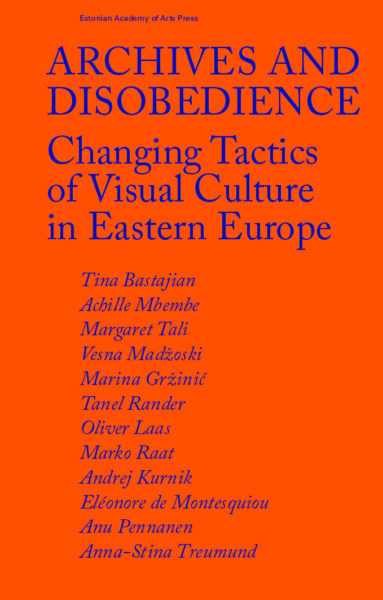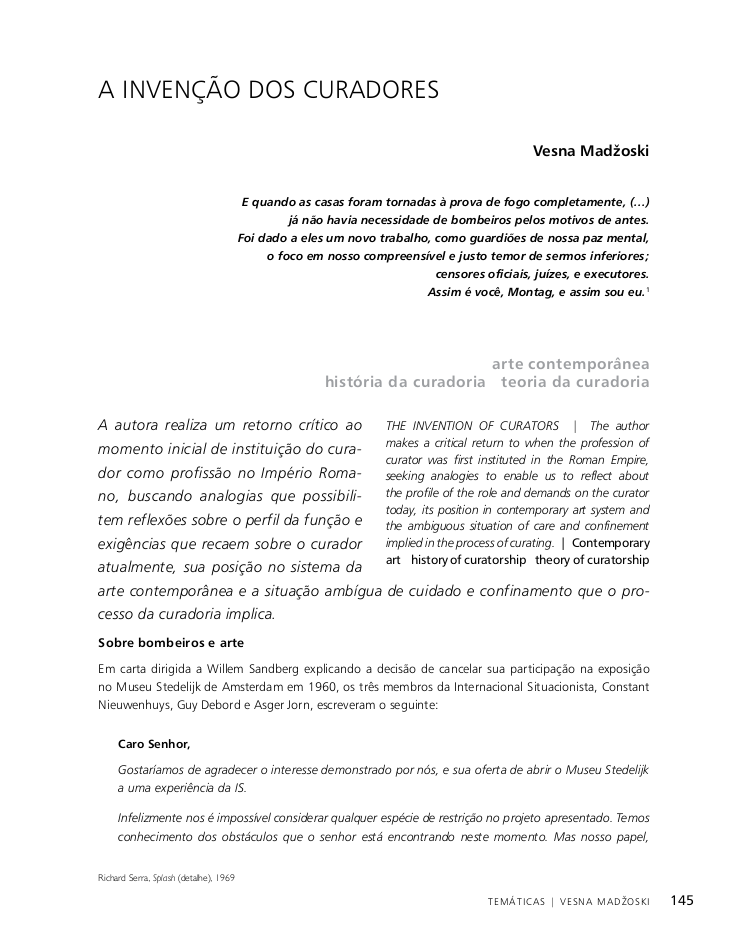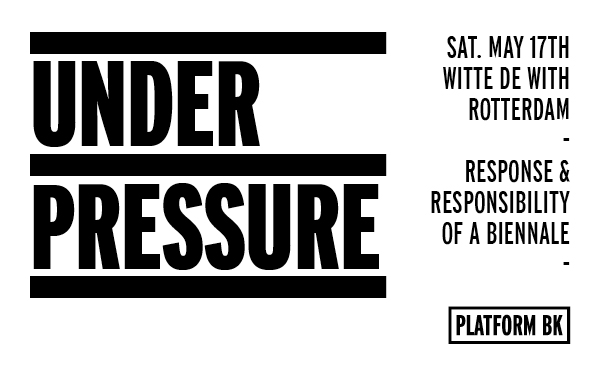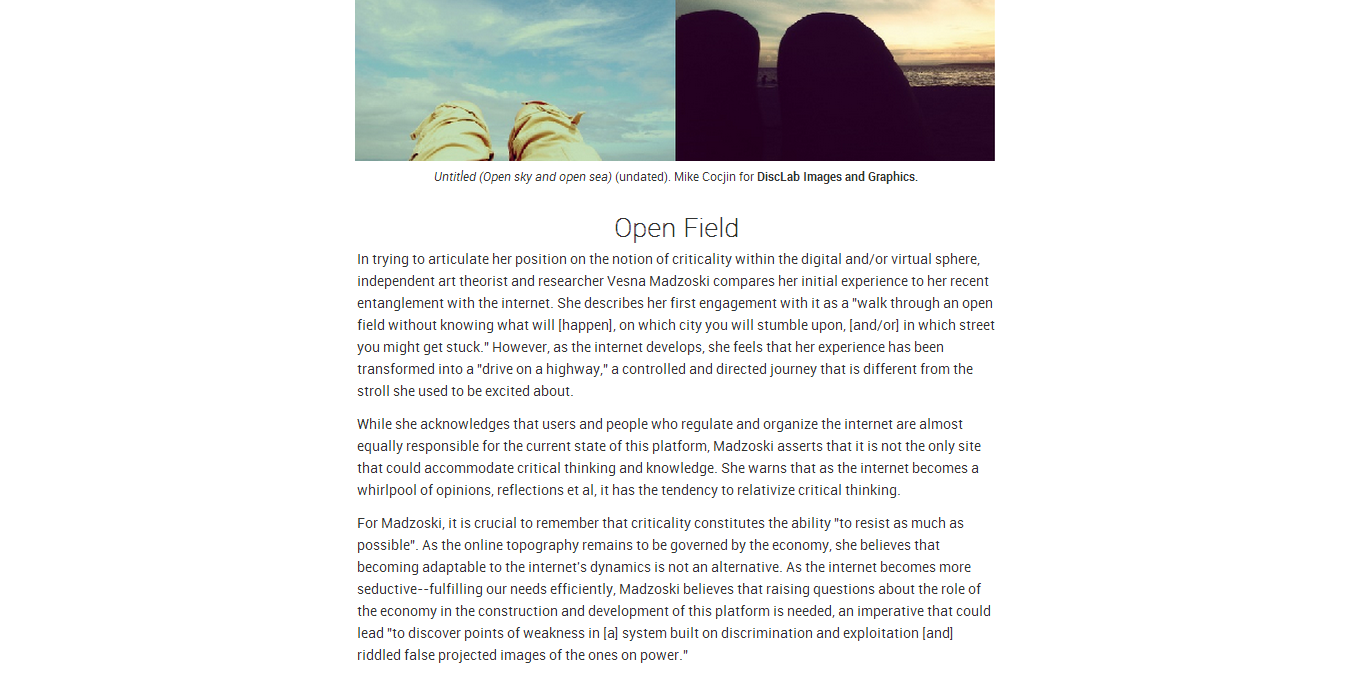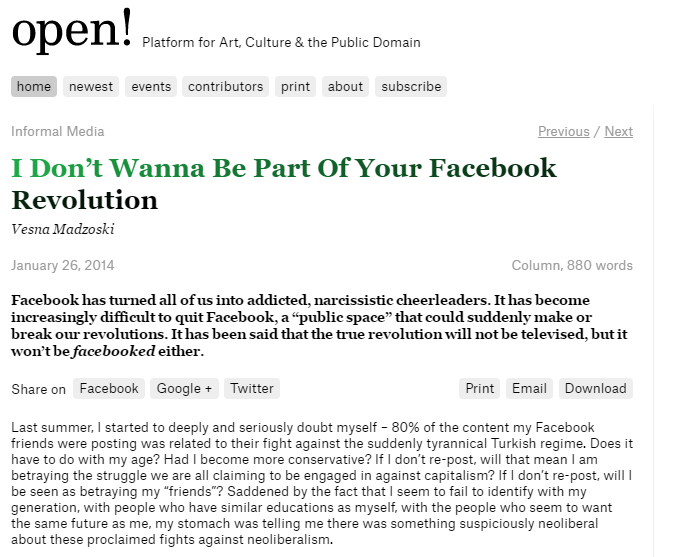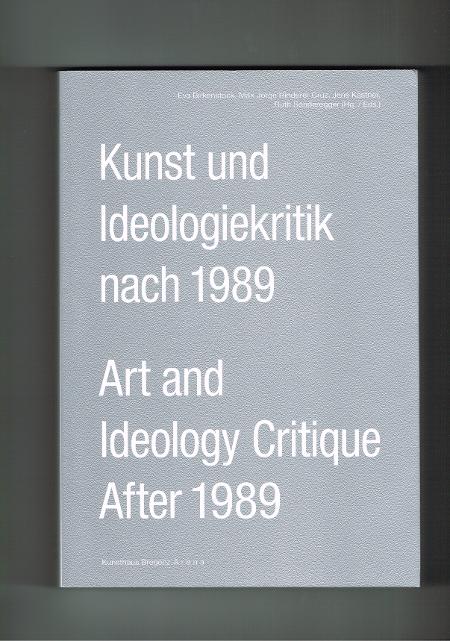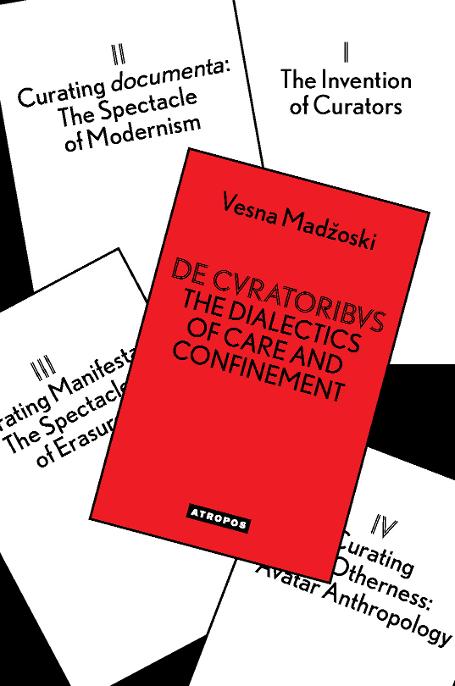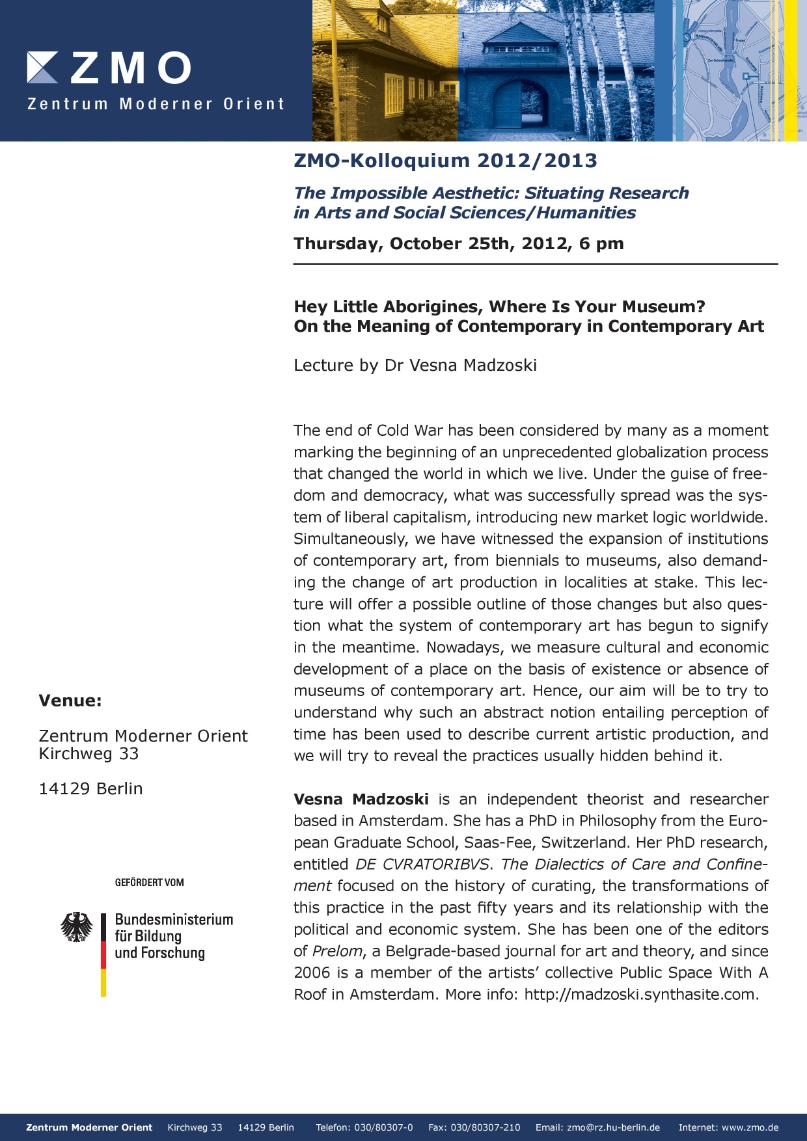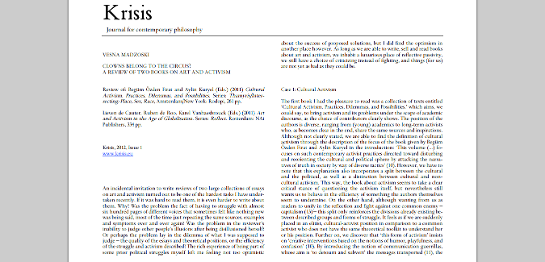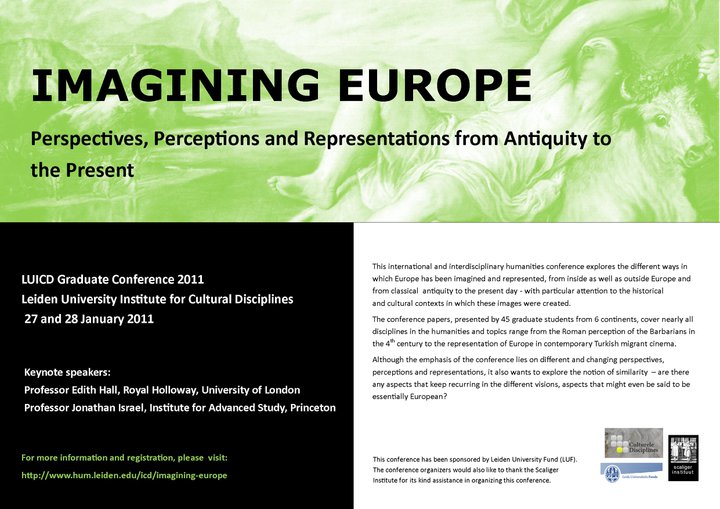
Tomorrow is being canceled because of the lack of interest.
Derek Jarman, The Last of England
*News:
"BEING (A) NEGATIVE:
THE SPECTRE OF SOCIALISM IN PHOTOGRAPHIC ARCHIVES"
The 2023 Issue of Journal, Museum of Applied Art Belgrade is now published, to which I was happy to contribute with an essay about the found photo negatives in one of the factories in Yugoslavia. With images by Mikica Andrejić and SKVER archive.
Abstract: In
rare anthropological interpretations of the glass smashing custom in the Balkan
Peninsula, it is written that this could be understood as a manner in which one
informs his/her environment of transiting to a different state of
consciousness. This article analyses, on one side,
the questions encountered while working on the exhibition “Fragile: Glass
Narratives, Broken Histories” (Public Space With A Roof – Amsterdam and Skver
Magazin – Zaječar, December 2022, Museum of Applied Art
Belgrade), and on the other the possibility of interpreting socialist history
from the fragments found in the former glass and crystal factory
“Kristal–Zaječar.” The focus is on the
discovery of several hundred rolls of discarded photographic negatives, a key
tool of understanding the glass production in Serbia after World War II. In an
unusual dialectics, the glass fragments become ‘readable’ thanks to the survived
images of the past, while the history narrative created by the found negatives
becomes destabilized by this smashed glass. The theory of photo negatives is
fragmentary in the history of photography and this article is an attempt to
change this. Namely, the potential of negatives to offer different versions of
one recorded moment also offers a unique possibility to write versions of
history not complying with the official narratives. This way, a new plane of
understanding the new post-socialist ‘normality’ is created.
KEY
WORDS: Kristal-Zaječar, glass smashing, photo negatives, Walter Benjamin,
history of photography
(Click on image to read the full text)
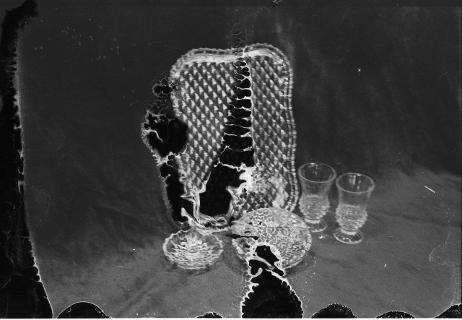
EXHIBITION "FRAGILE: GLASS NARRATIVES, BROKEN HISTORIES"
29.12.2022-15.01.2023
Museum of Applied Art, Belgrade
FRAGILE: GLASS NARRATIVES, BROKEN HISTORIES is a research project initiated by Public Space With A Roof, Amsterdam (Adi Hollander, Tamuna Chabashvili, Vesna Madžoski) in collaboration with SKVER Magazin, Serbia and photographer Mikica Andrejić. The project focuses on creating an archive and a collection of one of the former Yugoslav factory giants, Crystal-Zaječar, whose main goal was to turn previously luxurious objects of the rich into everyday objects available to everyone. After the 1990s and the fall of socialism, this factory which used to employ more than 4500 workers, was privatized and closed down. Nevertheless, the gigantic buildings it once occupied remained and still exist as strange creations seemingly belonging to an unknown civilization.
The ‘archaeological’ research done by Public Space With A Roof brings the encounter with the world of broken objects, traces of broken lives, and evidence of a broken history. The exhibition in the museum juxtaposes the images from the past to the present ones, revealing the fragile nature of the archive and the collection assembled and studied. It shares the objects and information gathered during the research, creating a space where the visitors are able to explore this history on their own.
"IN THE REALM OF DEMOCRACY"
I was happy to contribute this short essay on the topic of democracy as part of the ongoing project Performing Democracy by Ana Adamović and Milica Pekić, Kiosk, Belgrade.
"TAMNA STRANA GLOBALIZACIJE:
MAĐIONIČARI NIČIJE ZEMLJE"
The Serbian translation of my essay on exhibition Magiciens de la Terre (Paris, 1989)
and the participation of Australian First Nations artists
has been published in March 2022 edition of magazine "BETON", no. 239.
VIRTUAL EXHIBITION:
CRYSTAL CLEAR
PART 1 OF DIGITIZED CULTURAL AND INDUSTRIAL HERITAGE
As part of SKVER magazin, I devoted the first pandemic year (2020) to an ambitions task of digitizing more than 10000 images created in two socialist factory giants - Crystal Factory, and Leather and Textile Industrial Complex in Zaječar, Serbia, once Yugoslavia. Until late 1990s, Zaječar had more than 15 factories, today all part of fading memory. The found photo negatives revealed an entirely new world to us: a testimony of not only the working environment and workers' lives, but moments and activities in their "free" time - sports, competitions, education, visits to other workers in Yugoslavia and Europe.
"CRNI KVADRAT, BELI OKVIR"
The Serbian translation of my essay on Kazimir Malevich and racism
has been published in June 2020 edition of magazine "BETON", no. 220.
Join me on 23 May 2018 on Instagram
for instagram live presentation
@europeangraduateschool:
3pm EST (NORTH AMERICA) / 9pm CET (Europe)
GET OUT. ENGRAMS ON RACISM, DYNAMOGRAMS OF OPPRESSION
OR: WRITING ABOUT A THING NOBODY ASKED ME TO
This talk is inspired by the movie Get Out (2017) written and directed by Jordan Peele and has a simple story-line: “A young African-American visits his white girlfriend’s parents for the weekend, where his simmering uneasiness about their reception of him eventually reaches a boiling point.” Being classified as a horror movie, the main question here is what could a horror element be in a story of a guy meeting his girlfriend’s family? As it turns out, in case of a young black man, horror could be anywhere.
To stimulate the analysis, we shall borrow the concept of the engram as defined by the German art historian and cultural theorist Aby Warburg, “a moment of accumulation of an energetic charge deriving from a sufficiently intense and often repeated event capable of inscribing itself indelibly in the collective memory as a material track.” As it turns out, all the elements and symbols used in Get Out could be interpreted as highly charged engrams, pointing to a series of historical events and situations young black men were forced to participate in.
The ‘unpacking’ of engrams will take us through the history of hypnosis and Foucault’s theses on psychiatric power, the traumas of the surgeons, zombification as inherently modern phenomenon, the revelation of who the ‘honorary Whites’ are, to the racial component of contemporary surveillance systems and capitalist production. The aim will not only be to understand what it means to be identified as a young black man today, but also the possible way out of it: in the shadows of a disciplinary power, one always finds a black panther lurking.
Happy to share my new essay on
Malevich's "Black Square":
In the year 2015, a discovery shook the artworld. After an x-rays analysis, two other images and an inscription were found under “Black Square,” Kazimir Malevich’s iconic painting. The largest “crack” on the already cracked painting suddenly opened after the following words in Russian appeared: Битва негров в темной пещере глубокой ночью, roughly translated as Negroes battling in a dark cave at deep night. How are we to even begin to interpret this “zero point of painting,” for many the avant-garde masterpiece? Is there anyone who would laugh today at this “joke” and are we too quick to dismiss Malevich as yet another racist?
Honoured to see my essay on documenta
Ghostly Women, Faithful Sons
republished in the new issue of OnCurating.org, June 2017
Edited by: Nanne Buurman & Dorothee Richter
With contributions by: Anna Sigrídur Arnar, Angela M. Bartholomew, Beatrice von Bismarck, Nanne Buurman, Kathryn M. Floyd, Anthony Gardner & Charles Green, Walter Grasskamp, Ayşe Güleç, Kristian Handberg, Dorothea von Hantelmann, Susanne König, Vesna Madžoski, Nina Möntmann, Philipp Oswalt, Dorothee Richter, Elpida Rikou & Eleana Yalouri, and Nora Sternfeld
OnCurating.org
download essay
Happy to share parts of my recent research on Michel Foucault's writings
on dreams, imagination and art. Always inspiring.
We Dream in Images:
How did I become what I am,
and why do I suffer from being what I am?
Foucault’s Anthropology of Imagination
'EAST WEST MANIFESTa'
now published in
I CAN'T WORK LIKE THIS:
A Reader on Recent Boycotts and Contemporary Art
Ed. by Joanna Warcza & the Participants of the
Salzburg International Summer Academy of Fine Arts
Sternberg Press, 2017
Happy to announce the Turkish translation of my book
DE CVRATORIBVUS. The Dialectics of Care and Confinement
published by KOÇ UNIVERSITY PRESS, 2016


Happy to share this interview for the radio show
Cultural Circles, Radio Belgrade 2
made by Snežana Stamenković on December 28th, 2016.
We discussed my Belgrade lecture on the history of documenta
given at the Salon of the Museum of Contemporary Art in Belgrade,
as well as my book DE CVRATORIBVS and current issues in the art world:
"KURAATORITE LEIUTAMINE"
Estonian translation of my essay
"The Invention of Curators" now published
In: Arhiivid ja allumatus: Visuaalkultuuri muutuvad taktikad Ida-Euroopas
/
Archives and Disobedience. Changing Tactics of Visual Culture in
Eastern Europe
Edited by Margaret Tali and Tanel Rander
Published by Estonian Academy of Arts Press, 2016
Lecture Lost and Found: Crimes in the Manifesta Archive
March 23, 2016
Riga Art Space, Kungu Street 3, Riga, Latvia
Join us at the symposium on the potential of the archive
in the process of preserving culture and knowledge, and interpreting history, where I'll be presenting my findings
from the Manifesta Archive.
Manifesta – European Biennial of Contemporary Art was created in 1989 as a consequence of the changes Europe was facing, both politically and economically. Its main mission was to bring together art 'brothers and sisters' from both sides of the Wall, simultaneously promoting democratic values on which this new Europe was to be built. Nevertheless, during my research in 2006, on the recent changes in the practices of curatorship where Manifesta had a significant role, I was denied the access to their democratically proclaimed archive. Instead, I was sold an impressive publication on the short history of this art manifestation written by Manifesta itself. In his approach to exploring the archive, Jacques Derrida advises us to look for an event, a momentum that will open up the archive for critical reading through specific archeological practice, when “the origin then speaks by itself.”
In the space of the Manifesta archive in the publication, I had an unexpected encounter with something, or rather someone I did not expect to meet. This someone grabbed my attention at first glance and, since we have not been introduced before, soon became my main theoretical obsession.
What I propose here is to read this unusual deletion, this phantom of the archive, alongside the context that has produced it, Manifesta’s official rhetoric, and put its presumably democratic principles in dialogue with Jacques Derrida’s accounts on the archive. My main question here is what this phantom of the archive can “speak back” about: at the very beginning, it clearly deconstructs the intention of Manifesta to have a full control over its historical image. Thanks to this phantom, we are allowed to enter the archive and gain insights without the control of the guardians. We will learn not only about the new aesthetic procedures promoted by Manifesta, but also about the founding “democratic” postulates on which New Europe has been built upon.
The symposium is part of the international art exhibition "Lost in the Archive"
(Feb 2 - March 27, 2016)
Organised by: Latvian Centre for Contemporary Art in collaboration with the Association of Culture Institutions of Riga Municipality
My Essay European Democracy Revised:
The Crimes in the Manifesta Archive
now included in this great collection of essays:
Europa - Eine Fallgeschichte!
Edited by: Kerstin Stamm & Patrick Stoffel
Contributions by: Furio CERUTTI, Kerstin STAMM/Patrick STOFFEL, Heidi SCHATZL, Ines SOLDWISCH,
Lydia SCHMUCK, Kai Lars FISCHER, Hans Jörg SCHMIDT, Anna G. PIOTROWSKA, Sandro SCARROCCHIA/ Matteo CAVALLERI, Jan LENSEN, Marc-André KARPIENSKI, Jean Bernard MBAH, Peter PICHLER, Jonas NESSELHAUF, Vesna MADZOSKI
Published by: Christian A. Bachmann Verlag, Berlin, 2016
"A INVENÇÃO DOS CURADORES"
Portuguese translation of my essay
"The Invention of Curators" now published
In: Arte & Enasios no.28, PPGAV, Federal University of Rio de Janeiro Brasil
Lecture documenta and Sonsbeek Out of Bonds:
Jef Cornelis' Documentaries and the Spectacle of Art
december 10, 2014, 7.45 p.m.
dutch Art institute, Kortestraat 27, arnhem, NL
One of the biggest and most important exhibitions of the past several decades, documenta in Kassel, Germany, was initiated in 1955 by professor Arnold Bode with a two-fold function: partly as a "regeneration initiative for a small town that had suffered extensive damage during World War II and partly as an attempt to counter the attack on modern art by the Nazis". What was planned as a one-time event in a provincial town in the framework of a bigger national garden festival turned into a large success: the event grew and inspired its initiators to repeat it up to the present day.
In her new book DE CVRATORIBVS. The Dialectics of Care and Confinement, Vesna Madzoski finds two documentaries by the Flemish filmmaker Jef Cornelis to be crucial in the analysis of the history and ideology of documenta. In the lecture, she will offer an overview of problems raised by the documentaries, as well as point out the specificity of Cornelis' method in filmmaking. Among other things, we will recount the problems and changes provoked in Europe by the first arrival of the artists from the new art center of the world – New York. The following investigation aims at detecting the traces that contradict the master narratives of documenta, the evidence that had managed to escape the control and speak about the processes and procedures obscured by the spectacle.
As a final point in our discussion, we will compare the questions and problems raised in the documentaries on documenta 4 and documenta 5 to the ones encountered during the controversial edition of Sonsbeek in 1971, in the neighboring Arnhem in the Netherlands. After this analysis, we might be able to understand better Cornelis' decision to stop filming the art world after filming documenta 5 in 1972.
Special guest Jelena Vesić will respond to Vesna Madžoski's presentation and moderate the discussion with the public.
More info at: DAI Arnhem public events.
With great pleasure, I am happy to announce
two events in Cambridge and New York:
MIT program in Art, Culture and Technology
May 28th 2014, 4-5.30 p.m.
PROMOTION OF THE BOOK
DE CVRATORIBVS. THE DIALECTICS OF CARE AND CONFINEMENT
AND THE DISCUSSION WITH THE M.A. STUDENTS
Venue: art cube, Wiesner Building (E15-001), Lower Level, 20 Ames Street, Cambridge, MA
For more info please see: Massachusetts Institute of Act-ion
__________&&&__________
uniondocs, 322 uNION AVENUE, BROOKLYN, NEW YORK 11211
MAY 31, 2014, 7.30 P.M.
This event is part of OFF THE RECORD, a series of events accompanying MINI/Goethe-Institut Ludlow 38 Curatorial Residencies 2014 exhibition program
Lecture WITH THE SCREANING OF Jef Cornelis'
DOCUMENTA 4 DocumentarY (1968)
The rich and impressive body of work of Jef Cornelis has yet to be evaluated and analyzed. In the period between 1963 and 1998, he was primarily active as a director and scriptwriter for the Flemish broadcasting company (VRT) in Belgium. One of the most important aspects of Cornelis’ work is that he did not hide himself behind the camera, or present his films as objective and essentially “true” to reality. Instead, inspired by certain developments in the filmmaking of the 1960s, he treated the camera as his pen, or camera stylo, as a way to express his opinions on the events that he filmed. Apart from being a television maker, he was also involved in various art initiatives, and was an active participant in the international art scene, which gave him a unique access to this field. He has left behind several documentaries in which the art world is constructed and presented in a particular way, reflecting his deep dissatisfaction with certain manifestations of power.Nevertheless, after filming documenta 5 in 1972, Cornelis decided to stop filming the “art world”.
In her new book DE CVRATORIBVS. The Dialectics of Care and Confinement (Atropos Press, 2013), Vesna Madzoski finds two documentaries by the Flemish filmmaker Jef Cornelis to be crucial in the analysis of the history and ideology of documenta. In the lecture, she will offer an overview of problems raised by the documentaries, as well as point out the specificity of Cornelis’ method in filmmaking. Among other things, we will recount the problems and changes provoked in Europe by the first arrival of the artists from the new art center of the world – New York.
Joining Vesna Madzoski in a post-lecture discussion will be Thomas Zummer, the New York-based scholar, critic, artist, and curator.
For more info, please see: UnionDocs
A SYMPOSIUM
Under Pressure: Response & Responsibility of a Biennale
Witte de With, Rotterdam
May 17th, 2014
organized by PLATFORM BK
Speakers: Hedwig Fijen, director Manifesta; Ahmet Öğüt, visual artist and participant of the former Istanbul and Sydney Biennales; Vesna Madzoski, researcher and author of De Cvratoribvs. The Dialectics of Care and Confinement.
With the upcoming opening of Manifesta 10 in St. Petersburg, Russia, it has become vital to (re)investigate what roles and responsibilities large international exhibitions such as these have, within but also beyond the cultural field. What position can or should an organizer take against local democratic restraints, even censorship? Can one retain a critical position within these restraints or is any form of a dialogue a priori meaingless when it is put under pressure by political and religious ideology? Looking at these questions from different perspectives, the symposium Under Pressure - Response and Responsibility of a Biennale, organized by Platform BK, aims to examine what lessons can be learned from recent events and discussions and how we can envision the future of exhibiting art in a globalized world.
For more info: please see here.
Archive Kabinett
Dieffenbachstrasse 31, Berlin
April 30, 2014, 7pm
join us for the book launch of
de cvratoribvs. the dialectics of care and confinement
by vesna madžoski
with the introduction by patricia reed
more info: https://www.facebook.com/events/332623776889640/
Talk The Darkness of Our Time:
On the Meaning of Contemporary in Contemporary Arts
Stedelijk Museum Amsterdam
March 15 2014, 11.30 - 13.00h
At the conference "Collecting Geographies: Global Programming and Museums of Modern Art" I will be discussing some of the problematic aspects of the exhibition Magiciens de la Terre (Centre Georges Pompidou Paris, 1989), today considered as one
of the landmark exhibitions in the Western history of art:
According to several authors, the 1990s in Europe were significant not only on a political level, but had marked a new moment in the development of artistic and curatorial practices as well. A new kind of curator suddenly had to become an expert not only on history of art, but on local cultures as well. In the moment of re-canonization of Western artistic practices, new tools for understanding art from all over the world were needed. Curiously enough, they were found in anthropology. Nevertheless, these two disciplines responded to the post-1989 shifts in highly different ways.
In my paper, I will focus on the analysis of rare video recordings made during the making of the exhibition "Magiciens de la Terre" (Pompidou Centre Paris, 1989), considered by the official art history to be a crucial turning point of this shift. By juxtaposing these recordings to curatorial statements, my aim will be to define the manners in which the field of contemporary art has taken over anthropological categories and methodologies, simultaneously changing and distorting them. As Johanes Fabbian has shown, one of the main achievements of the colonial discourse was to make it possible to share the same physical space with the colonized ones by placing them in different time zones.
[You can now read the entire paper here]
Some thoughts on critical thinking and the role of Internet:
I was asked to contribute to
The Criticality Questionnaire by the Discussion Lab, Manila, Philippines:
Join us for the promotion of my book
DE CVRATORIBVS. The Dialectics of Care and Confinement
February 20, 2014, 3 p.m.
Jan Van Eyck Academy, Maastricht
During Jan Van Eyck Open Studios, as an event of the Curatorial Inlab,
moderated by Jelena Vesić
My new text
I Don't Wanna be Part of Your Facebook Revolution
has just been published at
OPEN! Platform for Art, Culture and the Public Domain
On January 30th, 2014, at the stedelijk museum amsterdam,
I will be presenting at the conference
What do we do when we are doing it? Models for a Future School of Curating
organized by De Appel Curatorial Program
This program brings together artists, curators, and researchers to reflect on current developments and urgencies within curatorial practices and challenge to what extent these professional tendencies are reflected in the curricula of curatorial education structures.
Speakers: Patrick Duarte Flores, Clare Butcher, Davide Quadrio, Vesna Madzoski, Maria Hlavajova, Jan Debbaut, Victoria Walsh, Ann Demeester, Bassam el Baroni, Jonas Zakaitis and Vivian Sky Rehberg.
For more information, please check here.
Proud to be in this company:
Kunst und Ideologiekritik nach 1989
Art and Ideology Critique After 1989
Published by Kunsthaus Bregenz ARENA, January 2014
Edited by Eva Birkenstock, Max Jorge Hinderer Cruz, Jens Kastner, Ruth Sonderegger
Design: Hit, Berlin
The third volume in the series of KUB Arena publications gathers introductory texts, essays, and interviews on the thematic relationship between “Art and Ideology Critique After 1989.” The volume comprised purely of text aims to achieve both an autonomous contribution to ideological research as well as to sensitize readers to differing practices of critiques of ideology in the field of contemporary art. Using the “ideological-theoretical turn” (J. Rehmann) of the 1960s as its point of departure, the first part of the book, under the title “Genealogical Constellations” develops a historical-systematic approach to historical and current critiques of ideology. The second part focusing on “Temporal Diagnoses” addresses the conjunction of specific ideological-theoretical inquiries with current developments in the field of art today.
The book’s contributions derive from the seminar of the same name as well as a symposium that both took place in September 2012 under the auspices of the KUB Arena Summer Academy at Kunsthaus Bregenz in cooperation with the Institute for Art Theory and Cultural Studies of the Academy of Fine Arts, Vienna.
The volume contains contributions by Eva Birkenstock, Matthijs de Bruijne, Alice Creischer, Diedrich Diederichsen, Stephan Dillemuth, Silvia Federici, Max Jorge Hinderer Cruz, Tom Holert, Jens Kastner, Vesna Madžoski, David Mayer, Merijn Oudenampsen, Jan Rehmann, Kerstin Stakemeier, Ruth Sonderegger, and Lea Susemichel, as well as conversations with Ulrike Müller, Alberto Híjar Serrano, Ágnes Heller, and János Weiss.
How are we to analyze power relations in the current system of contemporary art, or the presumably non-existing censorship in this free and democratic domain? The important event that struck the art world in the last century was the appearance of a new agent on the art scene: that of a curator. The following analysis has the ambition to strip curating down to its essence, by comparing three main domains in which we find this profession active: the Roman Empire, contemporary arts, and contemporary zoos.
Two large-scale manifestations served as platforms for the promotion and recognition of this profession, both with a clear political mandate as well: documenta in Kassel, Germany, and the traveling Manifesta—European Biennial of Contemporary Art. The third case-study, the Hollywood blockbuster film AVATAR, continues the discussion where the analysis of Manifesta brought us and, somehow, this perfect 3D cinematic image brings us back to curators. What this historical overview made clear was, that what all those various agents have in common is a duty to protect those considered to be in need of protection, which further opened up the questions of who decided this, and where the threshold is when care becomes confinement.
[You can read the Introduction and Chapter 1 here.]
ATROPOS PRESS
New York • Dresden
151 First Avenue # 14, New York, N.Y. 10003
General Editor: Wolfgang Schirmacher
Editorial Board: Pierre Alferi. Giorgio Agamben. Hubertus von Amelunxen. Alain Badiou. Judith Balso. Judith Butler. Diane Davis. Chris Fynsk. Martin Hielscher. Geert Lovink. Larry Rickels. Avital Ronell. Michael Schmidt. Victor Vitanza. Siegfried Zielinski. Slavoj Žižek.
Final proofreading: Douglas Heingartner
Design: Karen Willey
© 2013 by Vesna Madžoski
Lecture The Invention of Curators
April 2, 2013, 6 p.m.
Chukotka, Witte de Withstraat 140, Amsterdam
The role and the practice of curating has been widely discussed in recent years, but the same questions seem to be repeated again and again. In this short overview, we will try to define the function of curators through the examination of their history. Perhaps the key to understand this profession's role in contemporary arts lies in its foundations, the Roman empire, when curators were instituted for the first time. Further, this should give us more clues by which to interpret the changes that had occurred in the past fifty years, and we will focus on several crucial moments during the 1970s and the 1990s, when it becomes possible to understand better the political context through curatorial practices. The final part of this 'collage' will be devoted to a rarely discussed example of the Marxist curators from the 1920s, the inventors of particular “visual installations”.
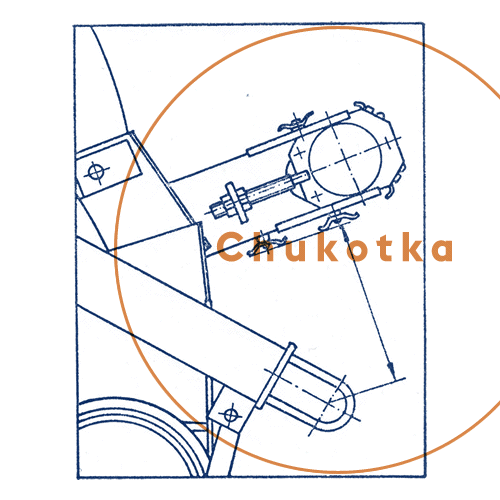
Sometimes on Awakening We Recal A Dream
New project by Public Space With A Roof
Kunstvlaai: Festival of Independents
November 23 - December 2, 2012
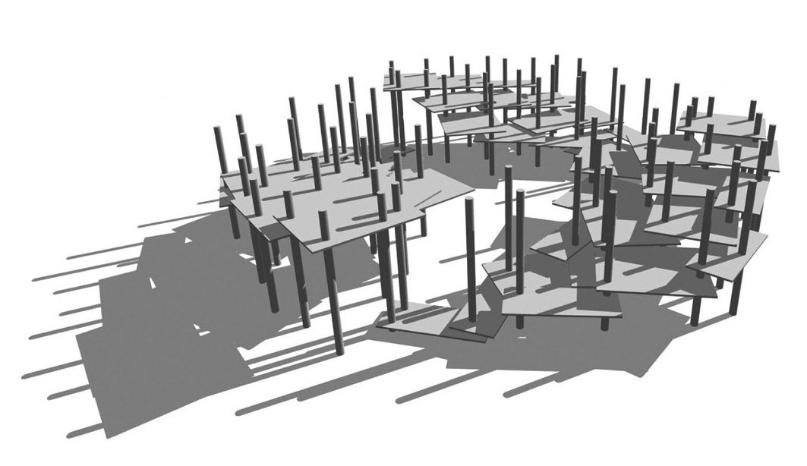
Opening: Friday, November 23, 5 pm
Sint Nicolaas Lyceum, Prinses Irenestraat 21, amsterdam
We are happy to invite you to join us and visit our stand at the Kunstvlaai: Festival of Independents. You will be able to see the model of our next project to which we also
invite you to contribute to:
Sometimes On Awakening We Recall A Dream is PSWAR next project developed as a commission for LAPS – Lectoraat Art and Public Space Gerrit Rietveld Academy, especially
for the new area of Amsterdam Zuidas and will be realized in the period summer/autumn 2013. The form and the elements of this project came as our reaction to the place where
it will take place – a newly developed business center next to a railway station. Created as a headquarter of economic power in Amsterdam, placed in a futuristic setting of glass towers, this space represents someone's visions of the future. The author of this vision is unknown to us, and it stays unclear as well how is a human being included in this, a human being that should inhabit it as his/her reality. This prompted us to pose a question of what kind of a utopian future are we supposed to imagine here: the one of permanent leisure and plenty, or the one of a classless society?
The structure consists of two levels – and we invite you to contribute to both:
1. The surface of the installation will be made of old doors from the demolished buildings from this area and will be used as an open stage: we invite any interested party, from individuals to organizations, to contact us and propose one or series of events for this structure. Any discipline and any form is welcome – we want this structure to be of service to the real needs of creative people in Amsterdam, without the interference of political, economic or other agendas. As many institutions in the Netherlands will be closed due to the cuts in funding, we want to offer them this space as a possibility to present their legacy as well as to reflect on this recently created situation.
2. The structure made of doors will be supported by wooden pillars and our aim is to use this part of installation for a particular exhibition of images and texts. Inspired by emas, Buddhist prayer images left in temples, you are invited to leave on the spot or send us your wish-images that can take a form of pictures or sentences. It could be a dream, a wish, even a vision of the future one might have, or anything that connects our inner lives with the dreams about the future to come. We will place this diverse material on small wooden plates hanging on the pillars, producing a gentle sound every time the wind blows, reminding the passers-by that art also has a poetic potential, and not only a decorative one. We want to juxtapose these dreams and wishes of ordinary people to this cold and closed environment of the Zuidas in order to test how much they differ. Perhaps it will show that we were wrong all the way, and that this sanitized financial center is actually a realization of dreams of Amsterdammers.
SEND US YOUR PROPOSALS FOR EVENTS AND WISH-IMAGES TO: info@pswar.org
OR CHECK OUR WEBSITE FOR MORE INFO ON THE PROJECT: www.pswar.org
Lecture Exorcising the Ghosts of Europe:
Manifesta - European Biennial of Contemporary Art
and the Failed Rhetorics of Democracy
September 29, 2012, 4 p.m.
Kunsthaus Bregenz, Austria
As part of the conference "Art and the Critique of Ideology After '89"
organized by the Institute for Art Theory and Cultural Studies of the Academy of Fine Arts Vienna and Kunsthaus Bregenz, I will present a part of my research on the ideology of curatorship in contemporary arts.
My new text
Clowns Belong to the Circus?
has just been published in
Krisis, Journal for contemporary philosophy 2012, Issue 1
A Review of two books on art and activism:
* Cultural Activism. Practices, Dilemmas, and Possibilities. Begüm Özden Firat and Aylin Kuryel (Eds.) (2011) Series: Thamyris/Intersecting: Place, Sex, Race, Amsterdam/New York: Rodopi, 261 pp.*
Art and Activism in the Age of Globalisation. Lieven de Cauter, Ruben de Roo, Karel Vanhaesbrouck (Eds.) (2011) Series: Reflect. Rotterdam: NAi Publishers, 334 pp.
Lecture Unpinning the Butterflies:
at the Threshold of Art and Anthropology
Wolfart Project Space, Rotterdam
April 15, 2012, 4 p.m.
Please join us at this afternoon program as part of the project 'Charlois Frequencies'.
I will have an honor to give my lecture at the event together with the artist Katarina Zdjelar who will present some of the main aspects of her work.
For more info, please visit: nõdenet.org
*This talk is a part of the research kindly supported by Fonds BKVB
**You can now read the transcript of the lecture here.
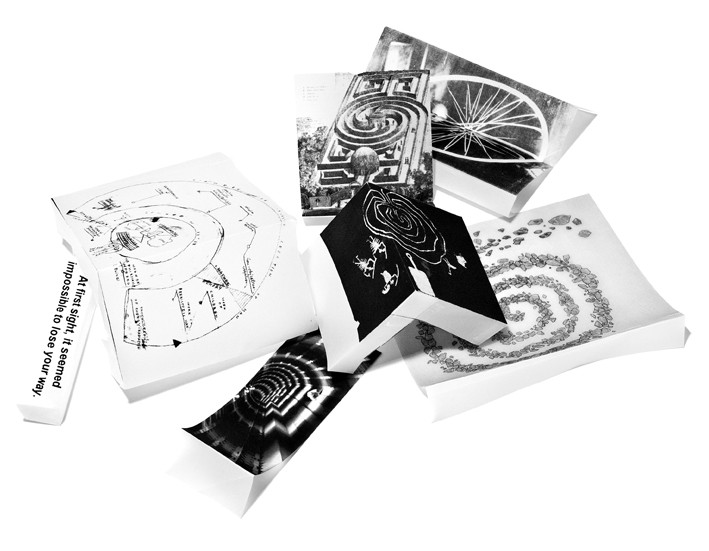
I am happy to invite you to the opening of
The Inverted City: Looking Through the Cracks of a Labyrinth
New project by Public Space With A Roof
Centre Pompidou-metz
September 10, 2011, 6 p.m.
The Inverted City is developed as a commission for the exhibition ERRE: Variations Labyrinthiques curated by Hélène Guenin and Guillaume Désanges. Via the model of a labyrinth, this group show tackles the notions of straying, loss and wandering as well as their representations in contemporary art. Extending over 2000 square meters in two of the gallery spaces at the Centre Pompidou-Metz, ERRE presents works by different generations of French and international artists, together with major figures from the collection of the Centre Pompidou: Vito Acconci, Abbas Kiarostami, Frederick Kiesler, Carl Andre, Constant, Maya Deren, Marcel Duchamp, Harun Farocki, Yona Friedman, Mona Hatoum, Isidore Isou, Kisho Kurokawa, Kasimir Malevitch, Robert Morris, Piranèse, Alexander Rodtchenko, Robert Smithson, Frank Stella, Raphael Zarka, etc.
More info: www.centrepompidou-metz.fr
PSWAR'S Inverted City
Thus the traveler, arriving, sees two cities: one erect above the lake, and the other reflected, upside down. Nothing exists or happens in the one Valdrada that the other Valdrada does not repeat, because the city was so constructed that its every point would be reflected in its mirror. (…) At times the mirror increases a thing's value, at times denies it. Not everything that seems valuable above the mirror maintains its force when mirrored. The twin cities are not equal, because nothing that exists or happens in Valdrada is symmetrical: every face and gesture is answered, from the mirror, by a face and gesture inverted, point by point. The two Valdradas live for each other, their eyes interlocked; but there is no love between them.
Italo Calvino, Cities& Eyes
By accepting the invitation to realize our new work in the framework of a large-scale exhibition devoted to the notion of labyrinth, among works of many of our idols and inspirations, we also accepted the challenge to redefine our own practice in a new context. Hence the decision to take further the main questions raised by the ERRE exhibition, by creating a work that will reflect on its three main aspects: the concept of labyrinth, the architecture of exhibition spaces, and the artists whose works are being presented.
The Labyrinth as a Concept
Labyrinth is a metaphor for both life and death, feelings of getting lost and finding one's way, play and horror. This duality of its nature also complicated our ability to formulate one single definition. Instead, we decided to search for the ways in which we could recreate the labyrinth as an experience, testing the ability of senses to translate this into particular kind of knowledge.
The Labyrinth as an Exhibition
In the imaginary space of the ERRE exhibition, we felt like walking around a particular urban structure made of imaginary streets and houses inhabited by works of art. The segments of the exhibition became for us the quarters of the ERRE City, neighborhoods with their own stories and emotional charging. The spaces in which we were to create our work turned out to be located on the borders of those imaginary quarters, simultaneously connecting and dividing them. Our position became one in a shadow, parallel universe that exists only as a reflection of the exhibition structure. Inspired by Italo Calvino, we decided to create a structure functioning as its distorted mirror image. On the level of the narrative, our main questions became: what are the ways in which we can detect the cracks in this labyrinth and what do we see once we look through them?
As we learned from The Naked City (a Situationists inspiration and the first film fully filmed on the streets of New York), in order to see the city from all its angles one requires transgression, or an outcast character to take us over the borders of perception. Therefore, we created a character living on the streets of ERRE as its shadow, disturbance and provocation, who could tell us secret stories about this seemingly peaceful, safe and controlled place.
The Labyrinths of Individual Minds
Institutions are haunted by the desire to discipline and order, something museums do not differ from. At the same time, many of the artworks exhibited in ERRE are the works of individuals who had a strong rejection of institutional confinement and rules. Following our desire to look through the cracks of this labyrinth, our imaginary character reveals untold stories about those individual inhabitants. The orderly image of the artworks is disturbed by the revelation of the process through which they were born, revealing also the individual labyrinths of the authors behind. Sometimes all we hear are their screams, strange sounds coming from the centers of their own labyrinths, frightening and tempting us to follow the noise to see if we could beat the beast.
The Map of Emotions
At the second floor of the exhibition, the visitor is left alone to find his/her way, leaving behind our imaginary character who continues to haunt the streets of ERRE. Through our investigation, we came to a conclusion that this imaginary urban structure missed one important element – a square. Hence, we decided to create this missing square, where the visitors can rest and reflect on the experience of things already seen. On its floor, the image of our own self-reflection becomes visible: a particular map which marks the emotional experience created by the downstairs labyrinth. As a map of emotional experience, it is also a tool which allows to question individual memory by replaying the scenes encountered in ERRE. It is here that all different elements will come together, the reassembled image of the city and its reflection in the lake.
The Inverted City: Looking Through the Cracks of a Labyrinth
Project by Public Space With a Roof: Adi Hollander, Tamuna Chabashvili, Vesna Madzoski
Installation created by: Adi Hollander, Tamuna Chabashvili
Assistant: Giacomo Sponzilli
Construction design: Davide Manzoni - RedeeMade Laboratory
Supported by: Mondriaan Foundation, Fonds BKVB, Centre Pompidou - Metz
www.pswar.org
Erre: Variations Labyrinthiques
Centre Pompidou – Metz, France
September 12, 2011 – March 5, 2012
Opening: September 10, 2011, 6-9 pm
Curated by: Hélène Guenin, Head of Curatorial Department, Centre Pompidou-Metz and Guillaume Désanges, Independent Curator and Art Critic
www.centrepompidou-metz.fr
My new essay Avatar Cat People - The Others in 3D
has just been published online in
Cinemascope, Year VII, Issue 15, January-June 2011, '3D and Beyond'
on post-avatar depression, cracks in the narrative,
and dangerous cat women...
Join us for the promotion of the book
Passages Through (The Unfinished Monument)
Huis Marseille - Museum for Photography, Amsterdam
february 20, 2011, 2 p.m.
The book Passages Through (the Unfinished Monument)
I made with Public Space With A Roof (PSWAR) came out in January 2010
and we are very happy to presented it to the Amsterdam audience.
The book is a story about a project by Public Space With A Roof for the KIASMA Museum in Helsinki, Finland, that was cancelled two weeks before its realization. It was intended to become an installation of three intersecting Moebius strips 'circling' around the gallery, functioning as a platform to exhibit works of other artists. Finally only a model of this structure was created and photographed with a pinhole camera. On the images, the structure is still visible, but their blurry and foggy atmosphere shows a different universe, closer to the world of dreams and imagination.
To find out more about the book click here
Designed and published by Roma Publications, Amsterdam
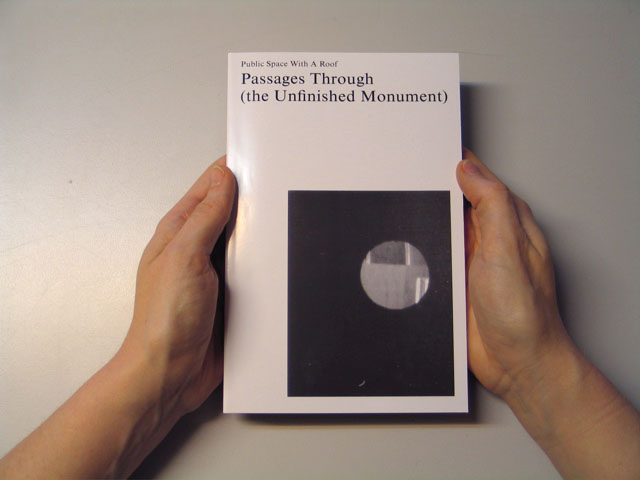
Talk Manifesta - European Biennial of Contemporary Art
and its Vision of Europe
Conference "Imagining Europe"
Leiden, January 27, 2011
Very happy to present at the conference "imagining Europe. perspectives, perceptions and representations from antiquity to the present" organized by the leiden university institute for cultural disciplines.
More info: www.hum.leiden.edu/icd/imagining-europe/

